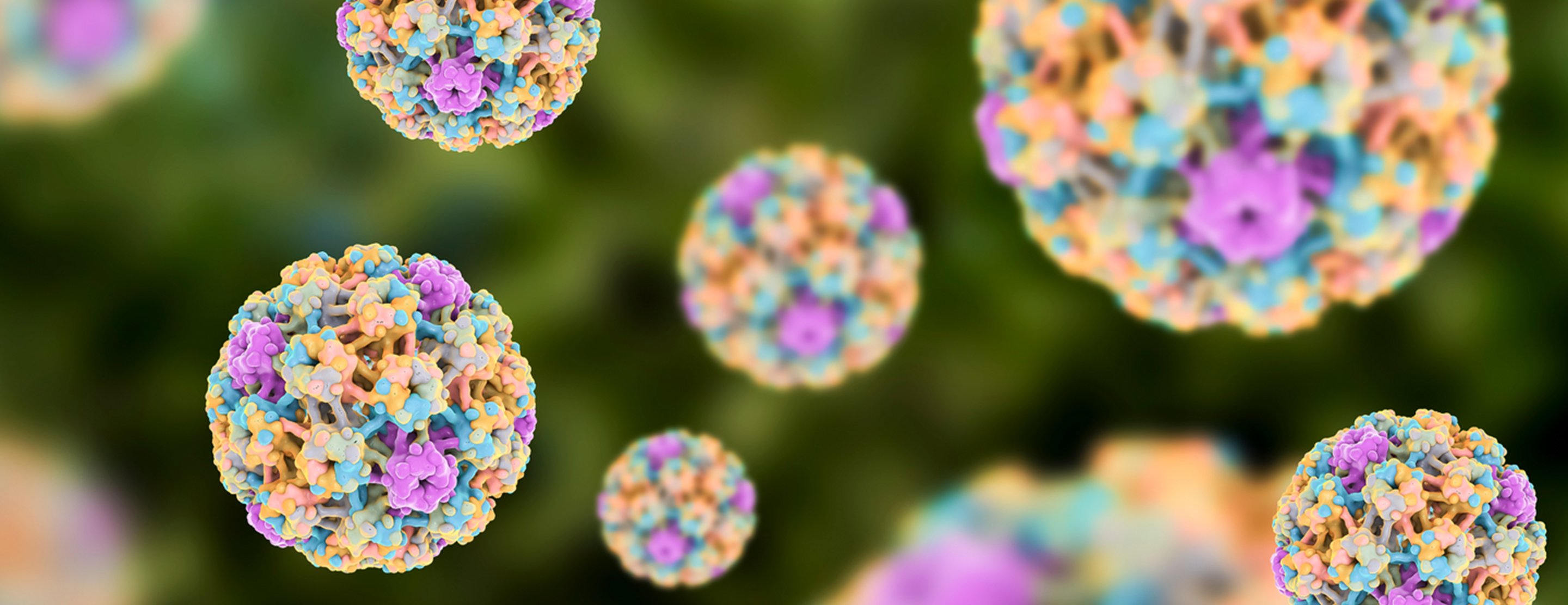
HPV DNA test
Definition
The HPV DNA test is used to check for high-risk HPV infection in women.
HPV infection around the genitals is common. It can be spread during sex.
- Some types of HPV can cause
cervical cancer and other cancers. These are called high-risk types. - Low-risk types of HPV may cause
genital warts in the vagina, cervix, and on the skin. The virus that causes warts can be spread when you have sex. The HPV-DNA test is generally not recommended for detecting low-risk HPV infections. This is because most low-risk lesions can be identified visually.
Alternative Names
Human papilloma virus - testing; Abnormal Pap smear - HPV testing; LSIL-HPV testing; Low-grade dysplasia - HPV testing; HSIL - HPV testing; High-grade dysplasia - HPV testing; HPV testing in women; Cervical cancer - HPV DNA test; Cancer of cervix - HPV DNA test
How the Test Is Performed
The HPV DNA test may be done during a
You lie on a table and place your feet in stirrups. The health care provider places an instrument (called a speculum) into the vagina and opens it slightly to see inside. Cells are gently collected from the cervix area. The cervix is the lower part of the womb (uterus) that opens at the top of the vagina.
The cells are sent to a laboratory for examination under a microscope. This examiner checks to see if the cells contain genetic material (called DNA) from types of HPV that cause cancer. More tests may be done to determine the exact type of HPV.
How to Prepare for the Test
Avoid the following for 24 hours before the test:
- Douching
- Having intercourse
- Using tampons
Empty your bladder just before the test.
How the Test will Feel
The exam may cause some discomfort. Some women say it feels like menstrual cramps.
You may also feel some pressure during the exam.
You may bleed a bit after the test.
Why the Test Is Performed
High-risk types of HPV can lead to cervical cancer or anal cancer. The HPV-DNA test is done to determine if you are infected with one of these high-risk types. Certain low risk types may also be identified by the test.
Your doctor may order an HPV-DNA test:
- If you have a certain type of abnormal Pap test result.
- Along with a Pap smear to screen women age 30 and older for cervical cancer.
- Instead of a Pap smear to screen women age 30 for cervical cancer. (Note: Some experts suggest this approach for women 25 and older.)
The HPV test results help your doctor decide if further testing or treatment is needed.
Normal Results
A normal result means you do not have a high-risk type of HPV. Some tests will also check for the presence of low-risk HPV, and this may be reported. If you are positive for low-risk HPV, your provider will guide you in making decisions about treatment.
What Abnormal Results Mean
An abnormal result means you have a high-risk type of HPV.
High-risk types of HPV may cause cervical cancer and cancer of the throat, tongue, anus, or vagina.
Most of the time, cervical cancer related to HPV is due to the following types:
- HPV-16 (high risk type)
- HPV-18 (high risk type)
- HPV-31
- HPV-33
- HPV-35
- HPV-45
- HPV-52
- HPV-58
Other high-risk types of HPV are less common.
References
Hacker NF. Cervical dysplasia and cancer. In: Hacker NF, Gambone JC, Hobel CJ, eds. Hacker and Moore's Essentials of Obstetrics and Gynecology. 6th ed. Philadelphia, PA: Elsevier; 2016:chap 38.
Practice bulletin No. 157: cervical cancer screening and prevention. Obstet Gynecol. 2016;127(1):e1-e20. PMID: 26695583
US Preventive Services Task Force, Curry SJ, Krist AH, Owens DK, et al. Screening for cervical cancer: US Preventive Services Task Force recommendation statement. JAMA. 2018;320(7):674-686. PMID: 30140884
Wang ZX, Peiper SC. HPV detection techniques. In: Bibbo M, Wilbur DC, eds. Comprehensive Cytopathology. 4th ed. Philadelphia, PA: Elsevier Saunders; 2015:chap 38.
Review Date: 09/25/2018
The information provided herein should not be used during any medical emergency or for the diagnosis or treatment of any medical condition. A licensed physician should be consulted for diagnosis and treatment of any and all medical conditions. Call 911 for all medical emergencies. Links to other sites are provided for information only -- they do not constitute endorsements of those other sites. Copyright ©2019 A.D.A.M., Inc., as modified by University of California San Francisco. Any duplication or distribution of the information contained herein is strictly prohibited.
Information developed by A.D.A.M., Inc. regarding tests and test results may not directly correspond with information provided by UCSF Health. Please discuss with your doctor any questions or concerns you may have.





